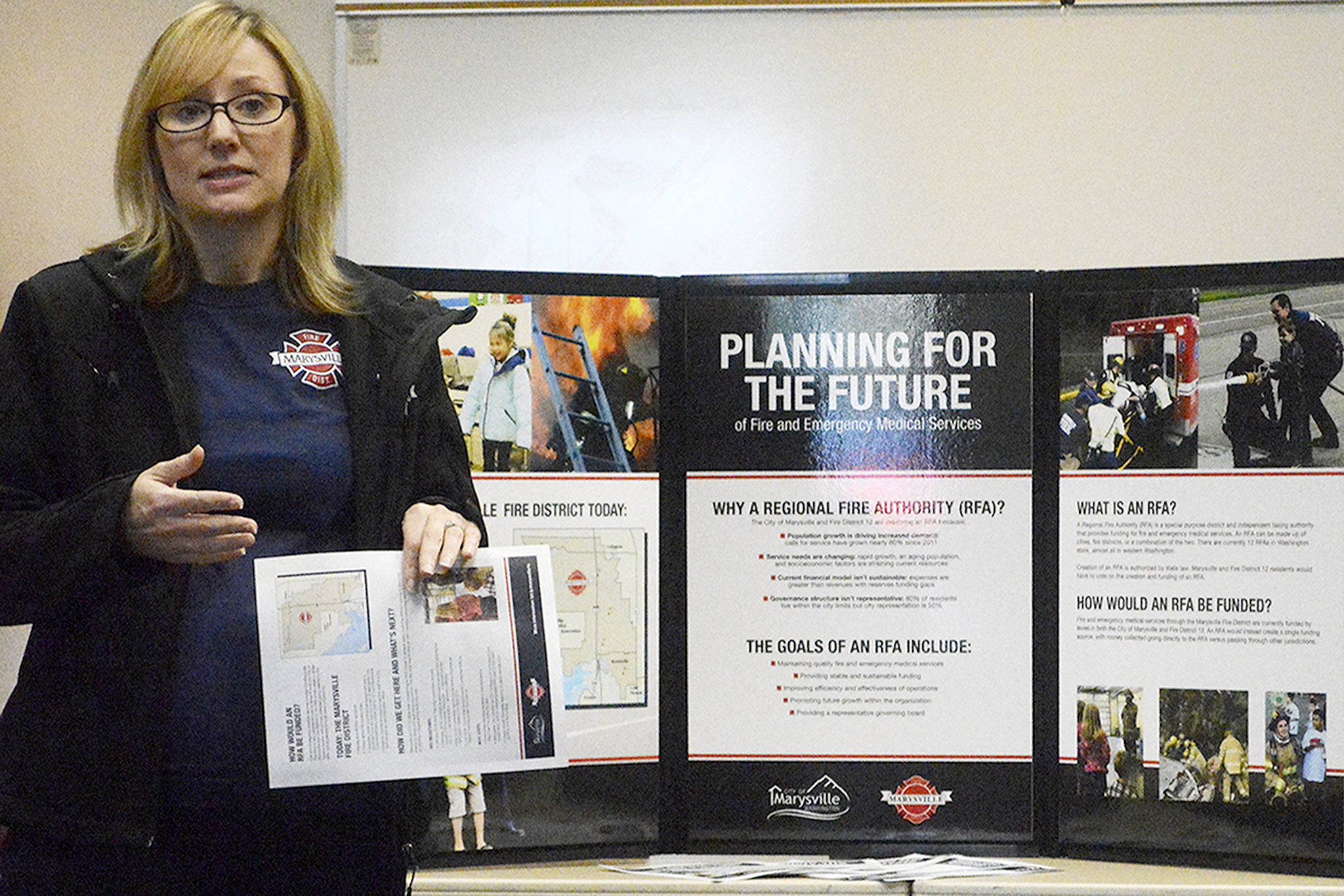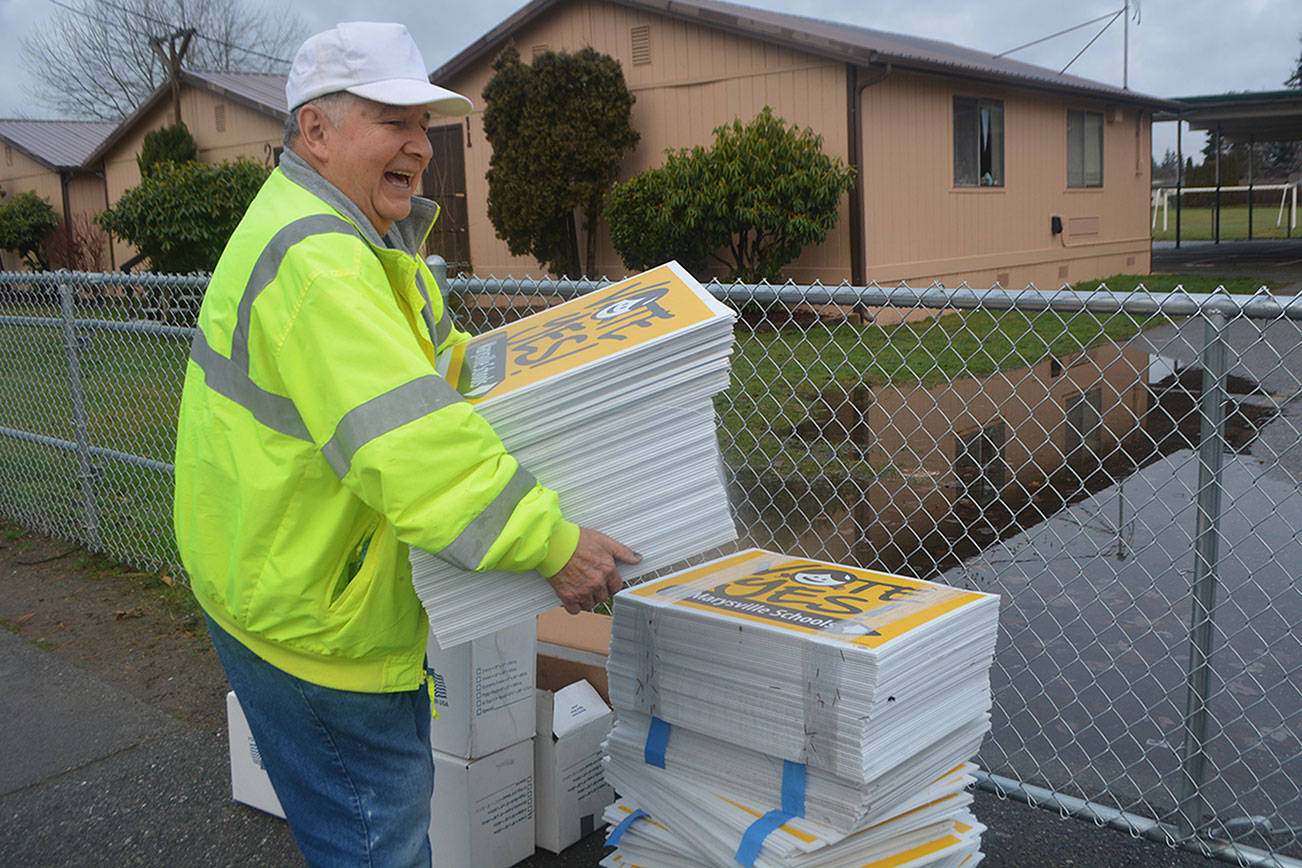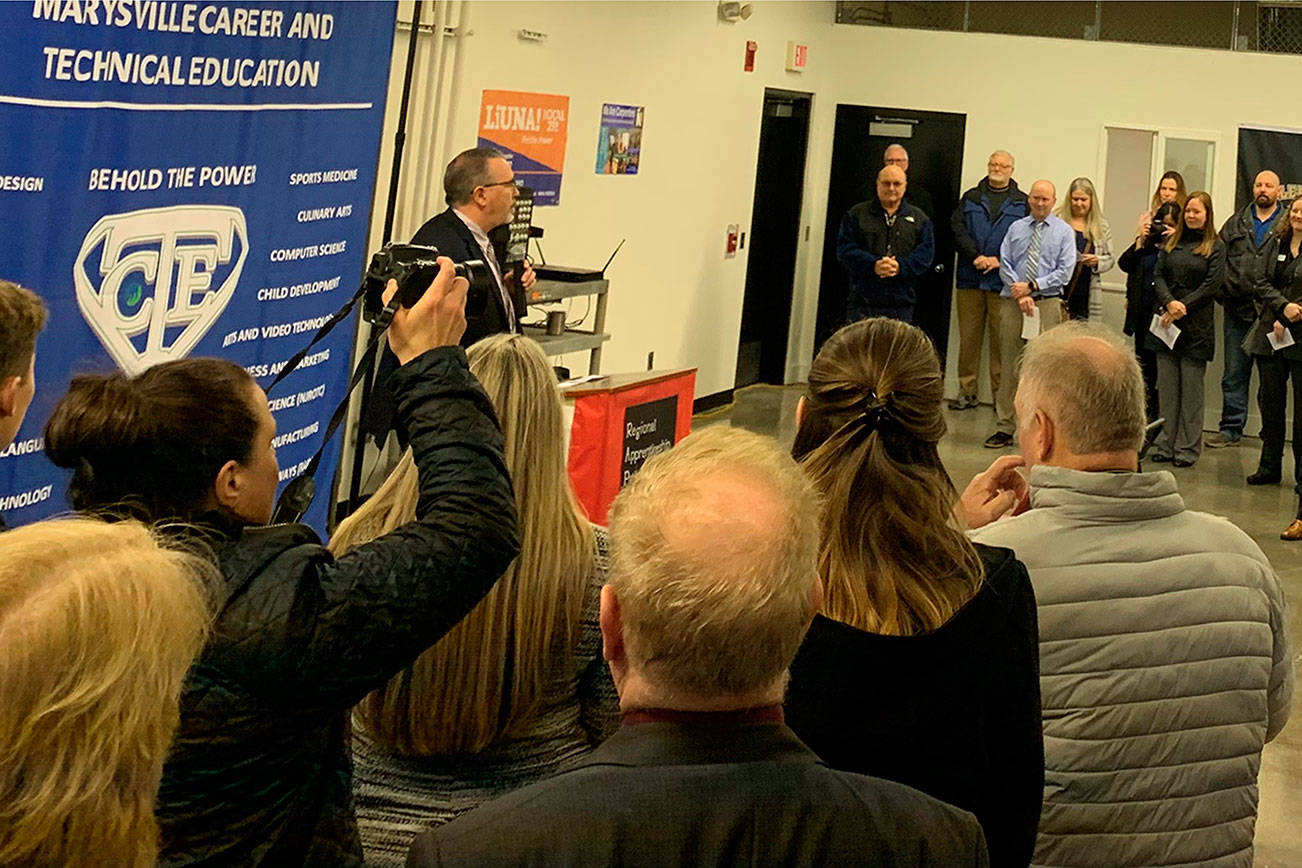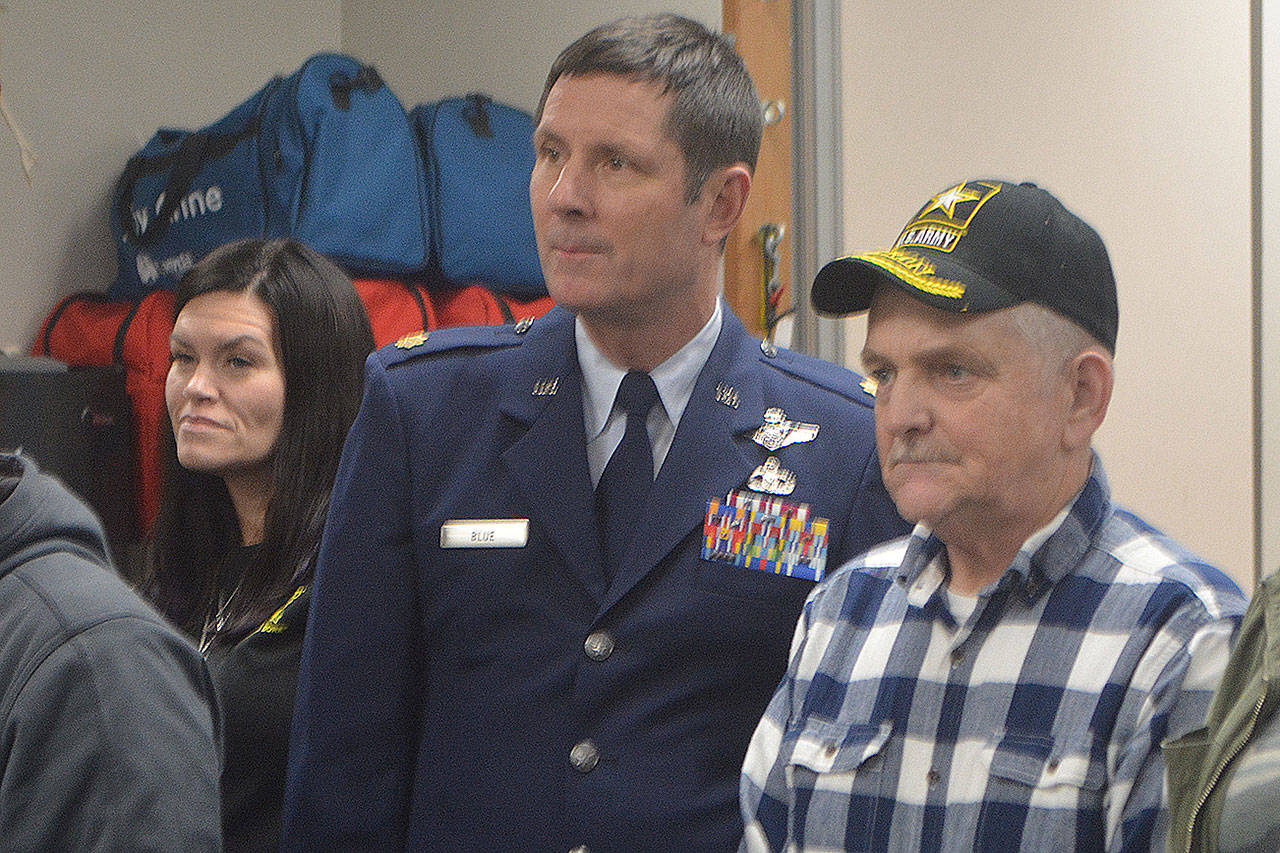MARYSVILLE – While the city and Fire District 12 are looking into combining into a Regional Fire Authority, it’s not like they don’t know each other.
“It’s like we’ve been going steady for 27 years and now getting married,” Fire Chief Martin McFalls said with a smile.
The city and Snohomish County district have been contractually working together since 1992. The city and fire district are studying combining to make the department more efficient because calls are increasing, are more medical in nature and to find a more stable funding source.
Communications directors Christie Veley of the district and Connie Mennie of the city recently led an informational meeting about a proposed RFA at the Shoultes Fire Station.
Veley said Tuesday in an email that the change would require higher taxpayer costs.
Officials said they hope voters will approve an RFA in April of 2019.
They said in 2017 they had to use about $1 million in reserves to pay for fire and EMS services because tax funds were not enough.
The Marysville Fire District is funded by two levies – one in the city and one in county District 12. Monies collected by the city go into the general fund and have to compete against other city departments for funding. Fire district taxes goes just to the district.
An RFA would allow city residents to pay directly for fire and EMS services.
“It’s greater transparency,” McFalls said.
The city levy could theoretically go down some as fire and EMS services would no longer need that as a funding source.
Reducing duplication of services is one way an RFA would improve efficiencies. There are 104 full-time personnel that staff five fire stations and an administrative office.
Veley said collections, audits and county fees would be reduced with one taxing entity.
Other efficiencies would include elimination of double processes within the financial department and funding for more full-time firefighters rather than relying on part-time firefighters to fill voids, Veley’s email says.
As for the part-time firefighters, Veley said many of them don’t stick around long because they get full-time employment elsewhere.
“They’re here six months then they’re gone because we have no ability to hire that person,” she said.
That would change with more full-time firefighters with an RFA.
Crew continuity is critical.
Fire Commissioner Richard Ross said, “Continuity is safety.”
Governance was one of the earlier problems in RFA talks, but that issue seems to be solved. The current proposal is to have four representatives from the city and one from the district, along with one advisory post. Currently the governing board is a 50-50 split.
Ross said Pat Cook helped him understand the benefit of an RFA being good for the public when Cook joined the board, which led to the governance compromise.
Officials said there are only three cities left in the county that still have their own fire departments.
What’s an RFA?
A taxing district that funds fire and EMS services. There are 12 statewide. Residents vote on creation and funding of one.
Why an RFA?
•Growth: Calls are up 60 percent since 2011.
•Service changes: Aging population is straining resources.
•Costs: Savings are dwindling as costs are more than revenue.
•Governance: 80 percent of residents are in city, but representation is 50 percent.
Goals of an RFA?
•Maintain fire and emergency medical services.
•Provide sustainable funding.
•Improve efficiencies.
•Provide a representative governing board.








